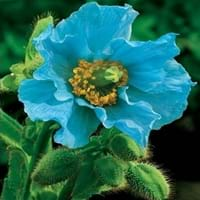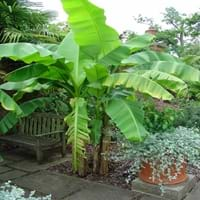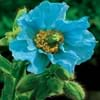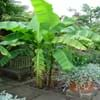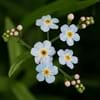Life Span
Perennial
Perennial
Origin
Southern Asia
Japan
Types
Not Available
Not available
Habitat
Mountains
Open areas, Open Plains
USDA Hardiness Zone
Not Available
6-11
Sunset Zone
A1, A2, A3, 1b, 2a, 2b, 3a, 3b, 4, 5, 6, 17
H1, H2, 2a, 2b, 3a, 3b, 4, 5, 6, 7, 8, 9, 14, 15, 16, 17, 18, 19, 20, 21, 22, 23, 24
Habit
Upright/Erect
Upright/Erect
Flower Color
Blue, Rose
Yellow, Brown
Flower Color Modifier
Bicolor
Bicolor
Fruit Color
Green, Tan
Yellow green
Leaf Color in Spring
Green, Blue Green
Green
Leaf Color in Summer
Green, Blue Green
Green
Leaf Color in Fall
Green, Blue Green
Green
Leaf Color in Winter
Light Green
Light Green
Leaf Shape
Oval with toothed margin
Cone shaped
Plant Season
Summer
Spring, Summer, Fall, Winter
Sunlight
Partial Sun, Partial shade
Full Sun
The pH of Soil
Acidic, Neutral
Acidic, Neutral
Soil Drainage
Well drained
Well drained
Bloom Time
Early Summer
Summer
Tolerances
Cold climate
Drought
Where to Plant?
Ground
Ground
How to Plant?
Divison, From bulbs, From Rhizomes, Seedlings
From bulbs, From Rhizomes, Seedlings
Plant Maintenance
Not Available
Medium
Watering Requirements
Do not let dry out between waterings, Requires consistently moist soil
Keep ground moist, Requires regular watering
In Summer
Lots of watering
Lots of watering
In Spring
Moderate
Moderate
In Winter
Average Water
Average Water
Soil pH
Acidic, Neutral
Acidic, Neutral
Soil Drainage Capacity
Well drained
Well drained
Sun Exposure
Partial Sun, Partial shade
Full Sun
Pruning
In late autumn, Remove damaged leaves, Remove dead branches, Remove dead leaves
Remove damaged leaves, Remove dead branches, Remove dead leaves
Fertilizers
Balanced liquid fertilizer monthly
All-Purpose Liquid Fertilizer
Pests and Diseases
Downy mildew, Slugs, Snails
Aphids, Rots, Scale, Spider mites
Plant Tolerance
Cold climate
Drought
Flower Petal Number
Single
Single
Foliage Texture
Not Available
Bold
Foliage Sheen
Not Available
Glossy
Attracts
Bees, Birds, Butterflies
Not Available
Allergy
Not Available
Hives, Itchiness, Swelling, Throat itching, wheezing
Aesthetic Uses
Beautification, Bouquets, Cottage Garden, Showy Purposes
Not Used For Aesthetic Purpose
Beauty Benefits
Not Available
Not Available
Edible Uses
Not Available
Yes
Environmental Uses
Not Available
Air purification
Medicinal Uses
Analgesic, Mild sedative
Fiber, Hair Loss, Kidney Stones, Piles, Vitamin C
Part of Plant Used
Flowers
Fruits, Leaves
Other Uses
Employed in herbal medicine
Used as Ornamental plant, Used for its medicinal properties, Used in herbal medicines
Used As Indoor Plant
No
No
Used As Outdoor Plant
Yes
Yes
Garden Design
Feature Plant, Mixed Border
Cutflower, Feature Plant, Foundation, Mixed Border, Screening / Wind Break, Tropical
Botanical Name
MECONOPSIS betonicifolia
MUSA basjoo
Common Name
Himalayan Blue Poppy
Japanese banana,Japanese fibre banana,hardy banana
In Hindi
हिमालय ब्लू पोस्ता
हार्डी केला
In German
Himalaya Blue Poppy
hardy Banane
In French
Himalaya pavot bleu
banana hardy
In Spanish
Amapola azul del Himalaya
plátano resistentes
In Greek
Himalayan μπλε παπαρούνας
σκληραγωγημένο μπανάνα
In Portuguese
Himalayan Blue Poppy
de banana resistentes
In Polish
Himalayan niebieski mak
hardy banana
In Latin
Blue Himalayan Poppy
duros Musa sapientum fixa
Phylum
Magnoliophyta
Magnoliophyta
Class
Magnoliopsida
Liliopsida
Order
Ranunculales
Zingiberales
Family
Papaveraceae
Strelitziaceae
Clade
Angiosperms, Eudicots
Monocotyledonous
Tribe
Not Available
Not Available
Subfamily
Not Available
Not Available
Number of Species
Not Available
Season and Care of Himalayan Blue Poppy and Hardy Banana
Season and care of Himalayan Blue Poppy and Hardy Banana is important to know. While considering everything about Himalayan Blue Poppy and Hardy Banana Care, growing season is an essential factor. Himalayan Blue Poppy season is Summer and Hardy Banana season is Summer. The type of soil for Himalayan Blue Poppy is Loam and for Hardy Banana is Loam while the PH of soil for Himalayan Blue Poppy is Acidic, Neutral and for Hardy Banana is Acidic, Neutral.
Himalayan Blue Poppy and Hardy Banana Physical Information
Himalayan Blue Poppy and Hardy Banana physical information is very important for comparison. Himalayan Blue Poppy height is 90.00 cm and width 45.70 cm whereas Hardy Banana height is 300.00 cm and width 240.00 cm. The color specification of Himalayan Blue Poppy and Hardy Banana are as follows:
Himalayan Blue Poppy flower color: Blue and Rose
Himalayan Blue Poppy leaf color: Green and Blue Green
Hardy Banana flower color: Yellow and Brown
- Hardy Banana leaf color: Green
Care of Himalayan Blue Poppy and Hardy Banana
Care of Himalayan Blue Poppy and Hardy Banana include pruning, fertilizers, watering etc. Himalayan Blue Poppy pruning is done In late autumn, Remove damaged leaves, Remove dead branches and Remove dead leaves and Hardy Banana pruning is done Remove damaged leaves, Remove dead branches and Remove dead leaves. In summer Himalayan Blue Poppy needs Lots of watering and in winter, it needs Average Water. Whereas, in summer Hardy Banana needs Lots of watering and in winter, it needs Average Water.
